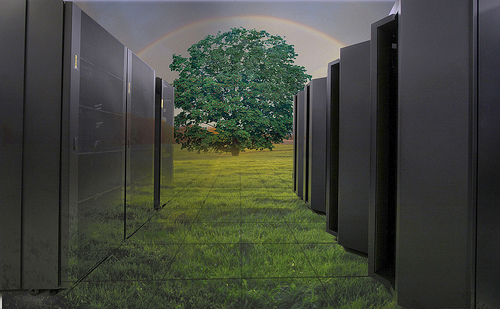 NEWS
NEWS
 NEWS
NEWS
 NEWS
NEWS
![]() Few people are likely to have heard of Yerington, Nevada. The town, with a population of just 3,048 according to Wikipedia, doesn’t often hit the headlines, but that doesn’t mean it hasn’t caught the attention of others.
Few people are likely to have heard of Yerington, Nevada. The town, with a population of just 3,048 according to Wikipedia, doesn’t often hit the headlines, but that doesn’t mean it hasn’t caught the attention of others.
Apple for example, is paying a lot of attention to Yerington, where it’s just opened up a brand new solar energy farm to supply energy for its data center in nearby Reno:
“The project will not only supply renewable energy for our data center [in nearby Reno] but also provide clean energy to the local power grid, through a first-of-its-kind partnership with NV Energy. When completed, the 137 acre solar array will generate approximately 43.5m kilowatt hours of clean energy, equivalent to taking 6,400 passenger vehicles off the road per year.”
The point of all this is an exercise in sustainability – Apple says that the clean energy produced at Yerington will help its Reno data center to become 88% more sustainable.
But clean energy isn’t the only thing that counts in this equation. Just as important is the use of state-of-the-art equipment, which can help data centers to reduce their greenhouse gas emissions by up to 80% according to a recent study by Stanford University, Northwestern University and Lawrence Berkeley National Laboratory researchers. Even more emissions can be cut if companies relocate their servers to colder climates, something that major tech firms like Google and Facebook have been leading towards.
Take Facebook’s recently opened data center in Luleå, Sweden, just inside the Arctic Circle, where winter temperatures often dip below minus forty degrees C, allowing engineers to draw these icy winds into the building and keep the servers inside cool by natural means.
Elsewhere, some of the US’s biggest tech firms have already made moves to consolidate their data center sustainability efforts. Jonathan Koomey, a research fellow at Stanford University and one of the co-authors of the above study, these companies view sustainability as a responsibility:
“Moving towards server farm sustainability is not always cheaper, but these companies still see it as beneficial because they can put a strategic issue behind them.”
The likes of eBay and Google now publicly document their data center sustainability online, showing a clear commitment towards making their server-side operations more environmentally friendly. All well and good, but what about the thousands of companies that own data centers whose main business is nothing to do with computing? While tech firms might see data center sustainability as a priority, a business involved in banking or insurance might not feel the same way. Certainly, there are many businesses that are unwilling to invest in the expense, hi-tech data centers, but are there any other ways these companies can cut down on their energy usage?
Putting their data in the cloud is one option, and it’s something that even Fortune 500 companies have begun looking at, but for reasons of security and regulatory concerns not everyone is willing to do so. An alternative option in this case might be the use of so-called modular data centers, or the data center 2.0, which according to a recent study carried out by IO and confirmed by Arizona Public Service (APS) offer energy savings of 19% in addition to an energy waste reduction of 44%.
A third option comes in the form of virtualization, which allows servers to run multiple virtual machines on the same hardware, utilizing more of the available power and resources in data centers. According to a recent study by FedTech, virtualization practices are able to increase CPU server efficiency by anywhere from 40% to 60%, whilst virtualizing 100 servers is said to be the equivalent of planting 1,569 new trees, or taking 89 cars off the road forever.
Then again, as everyone becomes more reliant on modern technology, smartphones, wearable tech and other gadgets, perhaps we all need to share responsibility for the environment. By remembering to do things like turning off our home modems when they’re not being used, and being mindful of how much data we stream to our mobile devices, we can all help to ensure that we’re building Big Data in a more sustainable fashion.
THANK YOU